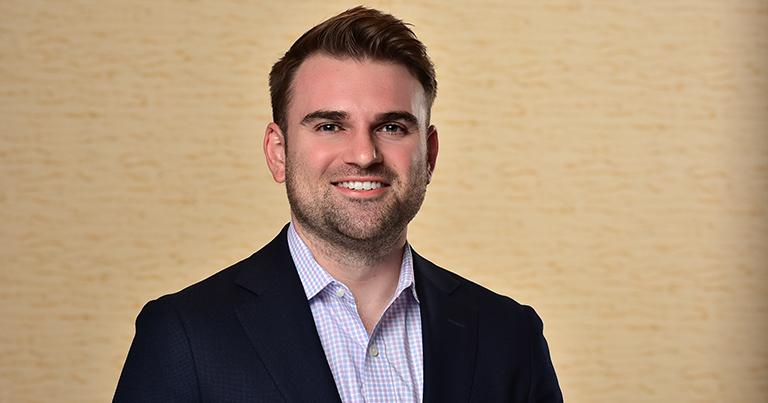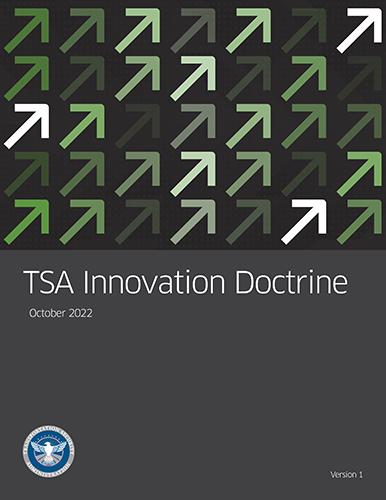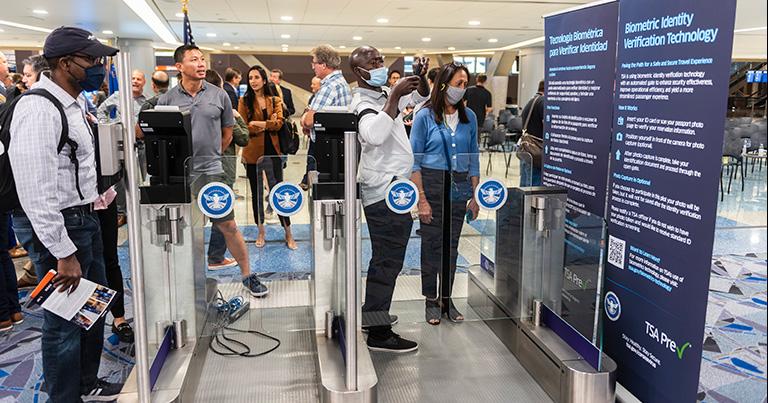
The Transportation Security Administration (TSA) recently published its first ‘Innovation Doctrine’ – an initiative designed to empower its workforce to engage in creative problem-solving in collaboration with industry, academia and government partners.
Daniel McCoy, Former Chief Innovation Officer, Transportation Security Administration, led internal efforts on the TSA Innovation Doctrine. “The hope in publishing a Doctrine versus a Strategy or White Paper is that it will create more lasting guidance on how to think and act, in order to organically create innovators and a broad culture of innovation, not specifically what to do to innovate,” he explains. “The culture of any organisation is not what is written down or discussed in leadership meetings, but the behaviours or actions that get an employee rewarded or reprimanded. Our goal with the Doctrine was to reinforce the fact that creativity, ingenuity, and invention are rewarded; reinforce TSA’s culture of innovation.”
There are four key objectives in publishing the TSA Innovation Doctrine:
- Provide guidance on “how to think” not “what to think” throughout the workforce.
- Reinforce the fact that innovation does not need to be rare or costly, but rather repeatable and scalable.
- Create a common lexicon and pipeline for all of TSA, and hopefully expand to other parts of government and commercial partners.
- Publish a document to build trust across TSA to hold leadership and peers accountable to the principles of innovation.
“One of the key purposes of the Doctrine was to establish almost a ‘bill of rights’ across TSA to give cover to invent, change, or innovate freely,” says McCoy. “From the leadership side it says ‘we expect everyone across the agency to think about ways to improve the mission through innovation. This is what we believe is the best way to do that’. For the workforce it’s a mechanism to hold leaders and peers accountable to say ‘I’m trying to improve the mission or experience per this guidance, in these ways, with this support. I expect the space to do so’.”
By publishing the document externally, the idea is also that air transportation partners, legacy and emerging, bring more creative, inventive, and unique solutions to TSA, as partners. “Many of the principles outlined in the Doctrine, such as ‘take risks’ or ‘fail fast’ are more standard practice in commercial groups,” McCoy explains. “The ecosystem in many ways helps reinforce those principles at TSA through specific programmes and partnerships.”
Bringing ingenuity, creativity, and innovation to the TSA’s work
One of the hallmarks of the Doctrine is that it does not first and foremost set a single office as the ‘innovation’ group. “Having one group focus on innovation means you’re creating a bottleneck such that you’ll never outpace your adversaries, technology changes, or pure externalities like COVID-19,” says McCoy.

He explains that the largest impact on creating more innovation throughout TSA is by creating more innovators within its ranks. “The Doctrine – along with programmes like our Design Thinking Cohorts, LinkedIn Learning training, and facilitated innovation training – taps into more of TSA’s workforce predisposed to want to bring ingenuity, creativity, and innovation to their work.”
The Doctrine also aims to facilitate teams at airports, across different functions, to build their own innovation pipelines. “That ability to self-generate innovative ideas, projects, and pilots means each group can work with local partners – such as small businesses, start-ups, colleges and universities – with a vested interested in the community,” McCoy notes.
This is best seen in the creation of TSA LIFT Cells, outlined in the Doctrine, which are Local Innovation for TSA (LIFT) teams at over 25 airports across the U.S. Each team is supported by the Chief Innovation Officer’s office and airport Federal Security Director, with local staff responsible for leading innovation at the local level. “The folks in the LIFT Cell receive training, documentation, and tools to manage their own pipeline and educate others at their airport,” says McCoy. “In September 2022 the first annual ‘LIFT Summit’ was hosted in Los Angeles, where all the LIFT teams co-located for three days to learn, collaborate, and network.”
TSA Innovation Pipeline: “how all innovations are best identified and scaled”
An important element of the Doctrine is the TSA Innovation Pipeline. TSA views problem-solving activities as an end-to-end process and its Innovation Pipeline is designed to enable the creative ingenuity of the workforce, while engaging with partners to solve complex problems through innovation.
“I believe if any organisation has an enterprise level system for innovation, and a leadership core that supports real innovation, that agency or company will naturally make innovation repeatable and scalable,” McCoy comments. “The TSA Innovation Pipeline sets that repeatable process for innovation and is designed to be adaptable to the size and scope of any challenge or opportunity so that it can be leveraged at the local or national level. Whether it’s the LIFT team at LAX working on breakaway barriers in response to input from local law enforcement and K-9 teams, or deploying a new scheduling application for all 440 federalised airports, the pipeline is how we believe all innovations are best identified and scaled.”
Future Travel Experience has a close working partnership with the TSA around our FTE Global event. During this year’s FTE Global in Las Vegas, the TSA Innovation Task Force led guided tours and delivered a briefing to showcase the latest iteration of the future checkpoint site running at Harry Reid International Airport, which is trialling new machines, and new approaches, to gather data and feedback on whether the technology is something TSA would like to use at airports nationwide. FTE Global 2023 moves to Los Angeles, taking place at Long Beach Convention Center on 19-21 September 2023.

Calling on innovators and early adopters to lead change
Following publication of the TSA Innovation Doctrine, the ambition now is to start creating more organic innovation and solutions across the agency. “The Doctrine is many things, but primarily it’s a call to action and ‘bill of rights’ to the workforce,” says McCoy. “TSA for years has expanded the capabilities, trust, and professionalism of the diverse workforce, now it’s calling on those innovators and early adopters to lead change. Democratised innovation means we’re staying agile ahead of threats, and solutions best align to problem owners.”
The follow-up will involve more integration with inter-governmental innovation groups and peers. Building a common lexicon and action means TSA can syndicate projects, investment, technology, and talent better with these peers. McCoy adds that it will also include growing the base of innovators and early adopters across the enterprise. “If you believe the standard diffusion of innovation theory, the Doctrine is really trying to protect and enable that first 15% of innovators and early adopters – the folks already keen to take risks, build pilot programmes, test new concepts, and really push back on the ‘we’ve always done it this way’ mentality. If that cohort is successful and rewarded for their efforts, it de-risks innovation for the agency as a whole. At that point, that’s when the culture change is inevitable.”






